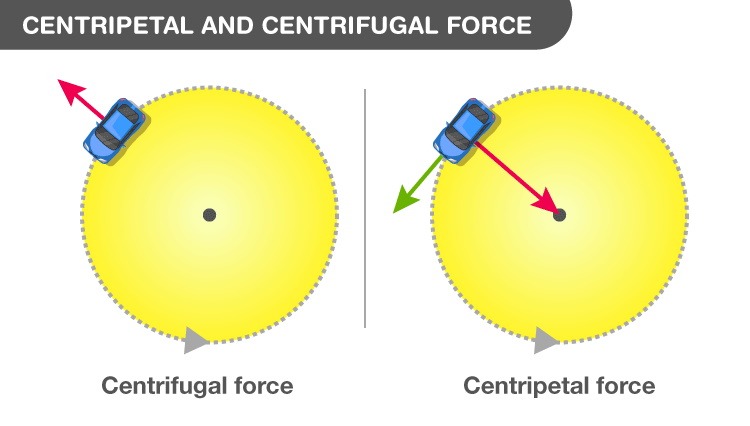
क्या हार में क्या जीत में ! किंचित नहीं भयभीत मैं
संधर्ष पथ पर जो मिले यह भी सही वह भी सही।
वरदान नहीं मानूंगा, हार नहीं मानूंगा |
Centripetal and Centrifugal Force
PHYSICS
6/3/20242 min read


Centripetal and Centrifugal Force
The terms "centripetal force" and "centrifugal force" are used in the context of circular motion. They describe forces that act on objects moving in a circular path, but they have distinct by roles.
Centripetal Force
Definition:
Centripetal force is the real force that acts on an object moving in a circular path, directed towards the center of the circle.
Role:
It keeps the object moving in a curved trajectory by constantly pulling it toward the center.
Without centripetal force, an object would move in a straight line due to inertia.
Formula:
Fc=mv^2/r
Examples:
The tension in a string when a ball is swung in a circle.
The gravitational force acting on a satellite orbiting a planet.
The frictional force between the tires and the road when a car turns a corner.
Centrifugal Force
Definition:
Centrifugal force is a pseudo-force (apparent force) that appears to act on an object moving in a circular path when viewed from a rotating reference frame.
It acts outward, away from the center of the circle.
Role:
It is perceived in a rotating frame of reference to explain why objects seem to be pushed outward.
It is not a real force but an effect of inertia when observed from the rotating frame.
Characteristics:
Centrifugal force is equal in magnitude but opposite in direction to the centripetal force when viewed in the rotating frame.
It does not exist in an inertial frame of reference (a non-accelerating frame).
Examples:
When you are in a car turning sharply, you feel pushed outward; this is the sensation of centrifugal force.
Water in a spinning bucket seems to be pushed outward, clinging to the sides.
Summary of Differences
Centripetal Force:
Real force directed toward the center of circular motion.
Necessary to maintain circular motion.
Acts in an inertial frame of reference.
Centrifugal Force:
Apparent force directed outward from the center of circular motion.
Perceived in a rotating frame of reference.
Not a real force; rather, a result of inertia.
Real-Life Application
Vehicle Dynamics:
Understanding centripetal and centrifugal forces is crucial in designing safe road curves and banking angles for highways and racetracks.
Amusement Park Rides:
Many rides utilize the principles of centripetal and centrifugal forces to create thrilling experiences, such as in spinning rides and roller coasters.
Centrifuges:
Centrifuges use rapid rotation to create a strong centrifugal force, separating substances of different densities, such as in medical labs for blood testing.
Astronomy and Space Science:
Understanding these forces helps in calculating orbital paths and designing stable satellite orbits around planets.
